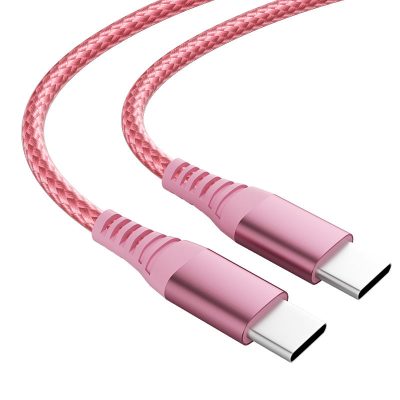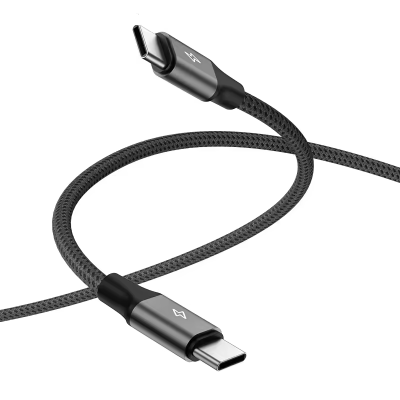USB C to C cables are increasingly becoming the standard for device connectivity, heralding a future where faster data transfer, universal compatibility, and efficient power delivery are the norms. Here’s why USB C to C cables are considered the future of connectivity:
1. High-Speed Data Transfer
SuperFast Data Rates:
- USB 3.1 and Beyond: USB C to C cables support data transfer speeds up to 10 Gbps with USB 3.1 Gen 2, and even higher with USB 3.2 and USB4, which can reach up to 40 Gbps.
- Efficient Workflows: These speeds are ideal for transferring large files quickly, such as 4K videos, high-resolution images, and complex data sets, enhancing productivity in professional environments.
2. Enhanced Power Delivery
Fast Charging:
- Up to 100W Power Delivery: USB C to C cables can deliver up to 100 watts of power, enabling fast charging for laptops, tablets, smartphones, and other devices.
- Universal Charging: The ability to charge a wide range of devices with a single cable simplifies charging setups and reduces the need for multiple chargers.
3. Universal Compatibility
One Cable for All:
- Standardization: USB C is becoming the universal standard for new devices, from smartphones and laptops to peripherals and accessories, ensuring broad compatibility.
- Cross-Platform Use: These cables can connect different types of devices, regardless of the brand or platform, promoting a more seamless and interconnected tech ecosystem.
4. Reversible Connector
User-Friendly Design:
- Easy Plugging: The reversible USB C connector eliminates the frustration of trying to plug in the cable the correct way, making it more convenient for everyday use.
- Consistent Connectivity: Ensures a secure and reliable connection every time, reducing wear and tear on ports and connectors.
5. Future-Proofing
Adapting to Technological Advances:
- Scalable Technology: USB C to C cables are designed to accommodate future advancements in data transfer rates and power delivery, ensuring they remain relevant as technology evolves.
- Longevity: Investing in USB C to C cables means being prepared for future devices and innovations, minimizing the need for frequent upgrades.
6. Improved Build Quality
Durability:
- Robust Construction: Many USB C to C cables are built with high-quality materials such as braided nylon and reinforced connectors, enhancing their durability and lifespan.
- Reliable Performance: Quality construction ensures consistent performance, reducing the likelihood of cable failures and connection issues.
7. Enhanced Functionality
Versatile Use:
- Audio and Video Support: USB C to C cables can carry audio and video signals, making them suitable for connecting monitors, docking stations, and other peripherals.
- Data and Power Combined: These cables can simultaneously handle data transfer and power delivery, streamlining connectivity and reducing cable clutter.
8. Eco-Friendly and Cost-Effective
Reducing E-Waste:
- Less Cable Waste: By standardizing on USB C, users need fewer cables and adapters, reducing electronic waste and promoting more sustainable tech practices.
- Economic Benefits: Over time, using universal USB C to C cables can reduce costs associated with purchasing multiple types of cables and chargers for different devices.
9. Security and Safety
Certified Standards:
- USB-IF Certification: Many USB C to C cables are certified by USB-IF (USB Implementers Forum), ensuring they meet strict standards for safety and performance.
- Safe Charging: Certified cables reduce the risk of overheating, short-circuiting, and other electrical issues, protecting both the devices and the users.
Conclusion
USB C to C cables are poised to become the cornerstone of modern connectivity due to their high-speed data transfer, enhanced power delivery, universal compatibility, and future-proof design. Their user-friendly and durable nature, coupled with broad device support and certified safety standards, make them an essential component in the evolving tech landscape. As technology continues to advance, USB C to C cables will play a pivotal role in ensuring seamless, efficient, and reliable connections across a wide array of devices.







